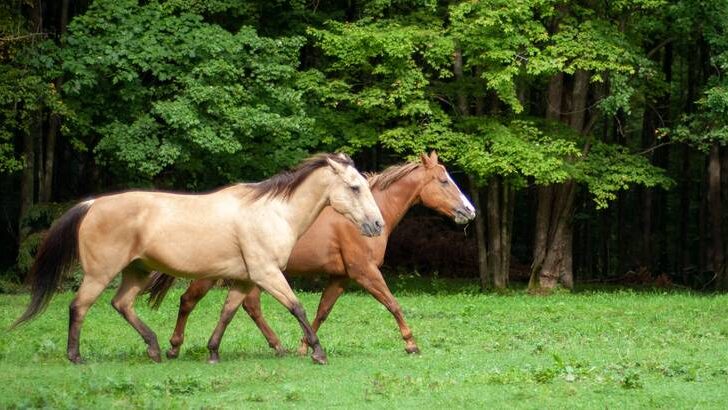Affiliate Disclaimer
As an Amazon Associate I earn from qualifying purchases. It helps me keep the website going. Thank you for your support.
If you have been lucky to watch an American Saddlebred, you will have noticed they move very differently from a Quarter Horse. But why do some horses move differently from others? The answer to this question lies in the breed of horse; and whether they are gaited or non-gaited horses.
Put simply, gaited horses have an extra way to move their legs, in addition to the four standard gaits. The key difference between gaited and non-gaited horses is the natural presence of an extra gait. However, there are other differences, such as conformation, training, or suitability for certain disciplines.
There is a lot to explore when it comes to gaited vs non-gaited horses. If you have ever thought about riding or buying a gaited horse of your own, read on to learn more.
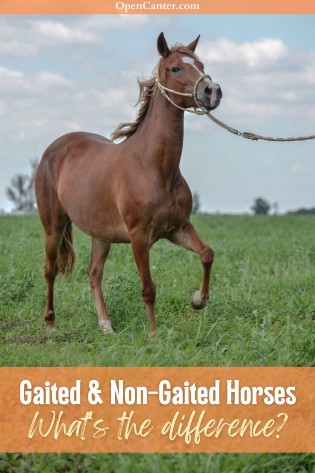
What Are Gaits?
The term ‘gaits’ refers to the different ways horses can move their legs and bodies when in motion. Just like humans can walk, jog or run, horses have different gaits at which to move around. Each gait is characterized by its speed and the sequence in which the horse’s hooves hit the ground.
There are four standard horse gaits:
- Walk: The slowest gait, with four beats. Each leg moves independently and the horse always has three hooves on the ground.
- Trot or jog: This is a two-beat gait where the legs move in diagonal pairs. It has a moment of suspension when all four hooves are off the ground. The term ‘trot’ is generally used in English disciplines and is more forward-moving. The ‘jog’ is slower and associated with Western disciplines.
- Canter or lope: This is a three-beat gait. The sequence of footfalls depends on which front leg is the ‘leading leg’. The term ‘canter’ is normally used in English riding, whereas the term ‘lope’ is found in Western riding. The lope also tends to be a much slower rhythm than the canter.
- Gallop: This is the fastest of the standard gaits. It is a four-beat gait and follows similar footfalls to the canter. However, the footfalls are sped up so that all four hooves hit the ground independently.
Gaited vs Non-Gaited Horses: What’s the Difference?
A gaited horse is a breed that has a fifth gait, visibly different from the four standard gaits listed above. The type of gait is usually associated with the breed of horse and is not commonly found in other breeds.
The gaited horse has been born with a unique way of moving, designed to conserve energy over long distances. This extra gait is usually smooth, as it produces less up and down motion than the standard gaits.
This means that more of the horse’s energy is used to propel them forward, rather than upwards, with each step. This is what makes gaited horses smooth to ride, as the rider doesn’t have to absorb as much movement.
The differences in gait depend heavily on the breed of horse. Most gaited horses create a different version of the walk or trot. Most gaited breeds canter and gallop very similarly to any other non-gaited breed.
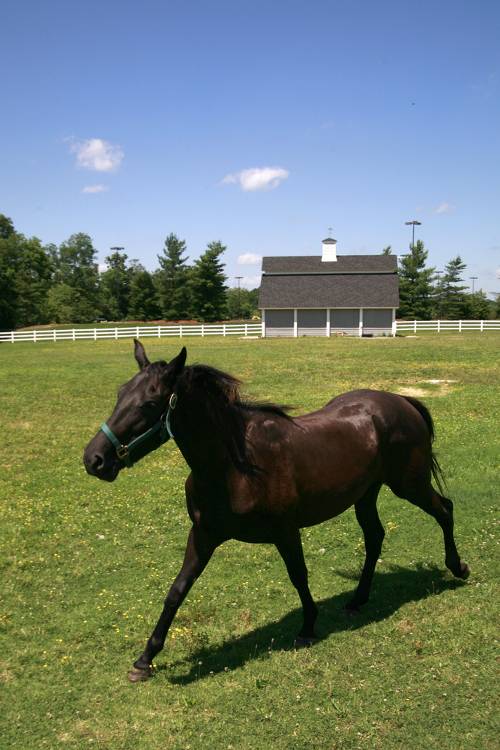
What Are Some of The Naturally Gaited Horse Breeds?
There are several naturally gaited horse breeds. These breeds have an extra gait from birth – they do not have to be trained to perform their extra gait.
It is thought that the extra gait originated from a genetic mutation dating back to the days of the Vikings. This mutation caused changes in the horse’s muscle and bone structure and nerve connections. Over time, this mutation continued through breeding lines to become different established breeds. (source)
Here are some commonly known gaited breeds:
- Tennessee Walking Horse
- American Saddlebred
- Rocky Mountain Horse
- Icelandic Horse
- Paso Fino
- Missouri Fox Trotter
- Standardbred
- Peruvian Paso
- Spotted Saddle Horse
Each of these breeds has its own specialty gait. Collectively, these gaits are known as ‘ambling’ gaits. Usually, the extra gait is a four-beat pace at an intermediate pace. However, some breeds can reach great speeds within their specialty gait.
Each breed has a unique name for its gait. While the gaits might look very similar, there are often slight differences between breeds. For example, let’s compare the ‘tolt’ of the Icelandic Horse to the ‘rack’ of the American Saddlebred.
Both gaits have the same sequence of footfalls. This means that hooves hit the ground in the same sequence for both breeds. Both gaits also have an even rhythm; meaning each footfall is equally spaced in time. Both breeds can reach speeds of up to 30-35 miles per hour in these gaits.
However – the key difference between the two is the freedom of the movement. The rack is characterized by a much higher and more extravagant movement. The tolt appears smoother and flatter to ride. The American Saddlebred also carries its head higher than the Icelandic horse.
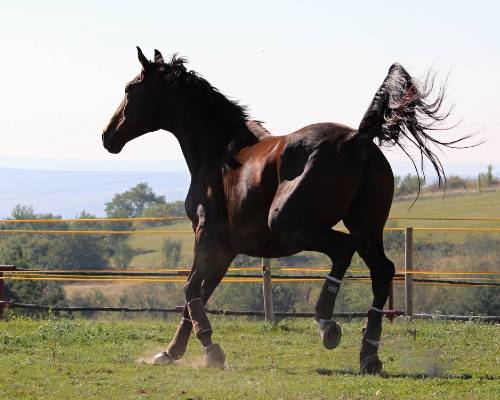
Can You Train a Horse to Perform Different Gaits?
Yes, you can train a horse to perform different gaits. Trained horse gaits can vary depending on the discipline, training goals, and breed of horse. All horses can be trained to perform different gaits.
Do They Have To Be a Gaited Breed To Be Trained?
However, it is very uncommon to see a non-gaited breed that has been taught to perform the specialty gait of a gaited breed. This is because teaching a horse an entirely new gait is a very lengthy process. Most trained gaits are a variation of one of the standard horse gaits.
There are extended and collected versions of the walk, trot, and canter. These are most commonly seen in dressage tests. In collected paces, the horse keeps the same rhythm but takes shorter and higher steps. In extended paces, the rhythm also stays the same, however, the horse takes much longer steps.
The piaffe and passage are very collected versions of trot. In the passage, the horse trots with very high leg movement, without covering much ground. The piaffe is seen when the horse is trotting ‘on the spot’.
There are also lateral movements, where the horse moves both forwards and sideways with each step. These movements include the half pass and the leg yield. Horses need to be trained to move sideways, usually in response to pressure from the rider’s legs.
Most gaited horses will undergo some kind of gait training. While the horse knows how to perform the gait, it needs to be trained to perform it at certain cues. It also may need to learn how to balance itself during the gait with the weight of the rider.
There are some instances of gaited horses being trained to improve their speciality gait. This is usually because the horse is being shown in a breed class. Breed societies have guidelines explaining what the gait should look like; the best example of the gait is usually the winner.
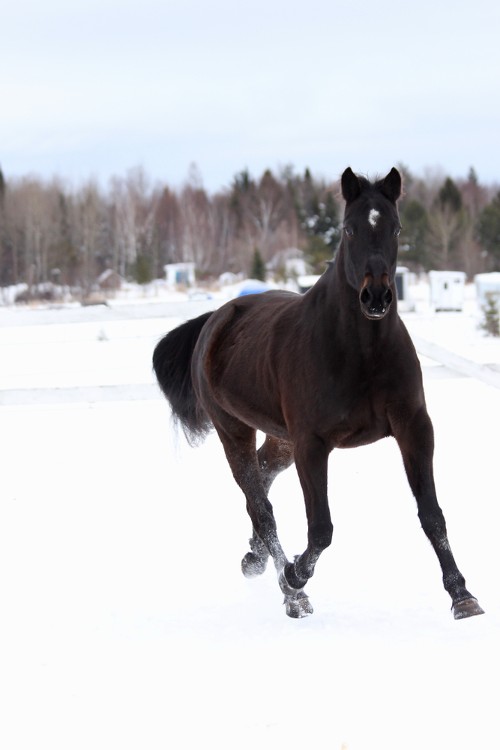
Is Gait The Only Difference Between Gaited And Non-Gaited Horses?
There are a few other key differences between gaited and non-gaited horses. Depending on the breed, the differences can vary from being barely noticeable to quite significant.
Gaited horses usually have a much higher head carriage than other breeds. This is because they need to keep their heads up higher, to maintain their balance. Some breeds also have extravagant foreleg movement and need to keep their head up out of the way. (source)
Gaited breeds also have different conformation to other breeds. Conformation refers to the features of the horse’s body and how they all fit together. For example, having high, standard, low, or mutton withers is a conformation trait.
The conformation differences seen in gaited breeds depend on which breed you are looking at. Tennessee Walking Horses tend to have a neck that is set very high, along with long sloping shoulders and hindquarters. Their back is quite short, and they have a short and strong coupling. (source)
Compare this to the Standardbred, which has a slightly longer and stronger back, and haunches slightly higher than the withers. They have the same long sloping shoulders, however also have a narrower chest. Their head is also much less refined than the Tennessee Walking horse.
Some gaited breeds are also at higher risk of developing injuries, due to their conformation or gait. The American Saddlebred, with its high stepping gait, is at a higher risk of joint issues like arthritis. (source). While all breeds are at risk of these issues, different gaits can cause extra force on the horse’s joints.
What Are The Benefits of Owning or Riding a Gaited Horse?
Gaited horses come with a range of different benefits. Perhaps the most notable one is that they can offer a much smoother ride than other breeds. This means the rider can easily sit to the motion of the horse as they ride.
Gaited horses can be a great option for beginning riders, as their smooth movement prevents excess bouncing. This also makes them a great choice for older riders who may have arthritis or old injuries. They are also a great choice for anyone with back problems. (source)
These horses are great at traveling long distances. Their gait is designed to allow them to cover longer distances more efficiently. This makes them a great option for riders who like to trail ride. They are also a welcome addition to trail riding facilities, riding schools, or dude ranches.
Most gaited breeds are also known for their temperament. They are quiet and gentle and are able to be trained to suit a variety of riders. There is also a wide selection of breeds available, in a wide range of colors and heights.
Lastly; owning a gaited breed can set you apart from the crowd! If you want to be unique, then owning a gaited breed is one way to do it. Most horse people are interested in meeting horses that are a less common breed.
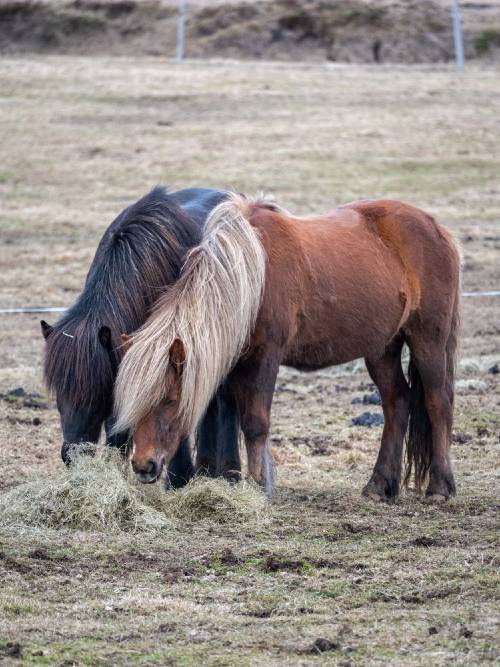
Can Gaited Horses Jump?
Yes, gaited horses can be trained to jump. However, they might jump in a slightly different way from how a non-gaited horse jumps. Training the gaited horse to jump might also take longer.
Gaited horses are designed to travel long distances comfortably; not to complete a showjumping course. While they will be able to jump fences of moderate height, it is unlikely they will reach high levels.
A good show jumper needs to have a powerful hind end and a good-quality canter. While gaited horses can canter, for some it is not their preferred gait. This means it can be difficult to train the gaited horse to have a well-balanced and adjustable canter.
There are some examples of gaited horses who were successful jumpers. Pete, a registered Tennessee Walking Horse, had many wins in the hunter and jumper rings. He competed at heights up to four feet and loved his job. (source)
What About Disciplines Like Dressage or Reining?
Gaited breeds are versatile and can be trained across many disciplines at lower levels. However, they may not be overly successful at very high levels of dressage or reining. This is because these disciplines are judged based on the horse’s ability to perform movements based on certain criteria.
While gaited breeds are able to perform the standard gaits, they might not do this as well as non-gaited breeds. Breeds like the Warmblood and the Quarter Horse are often bred specifically for these disciplines. Their gaits are much more suited to scoring higher against the criteria.
However, gaited horses are able to compete in ‘Gaited Dressage’. This is a variation of the existing sport of dressage, however incorporating the specialty gaits of gaited breeds. The focus of the sport is to train the horse to gait correctly and humanely and to develop the horse’s training. (source)
Do Gaited and Non-Gaited Horses Need Different Tack?
If you are riding your gaited horse for pleasure, you won’t need to track down specialty tack. So long as your tack is in good condition and fits, you will be able to use it. However, some gaited breeds can be difficult to find appropriate equipment for.
For example, stockier breeds like the Icelandic horse can be tough to find the right saddle for. This is because they are wider than most horses, and may have low or mutton withers. When combined with other traits, like high head carriage, finding a saddle that fits can be difficult.
It is recommended to seek the advice of a professional saddle fitter when buying a saddle for your horse. All breeds have their own unique conformation, and it is important that your saddle fits correctly. If it does not, it can cause your horse pain and muscle damage. This is similar to what we feel when we wear a pair of shoes that don’t fit.
The Cutback Saddle
Another consideration with gaited breeds is that they might need a ‘cutback saddle’. These saddles are designed for a greater range of motion through the horse’s shoulder. These are an English-style saddle with straight unpadded flaps and a cutback pommel. (source)
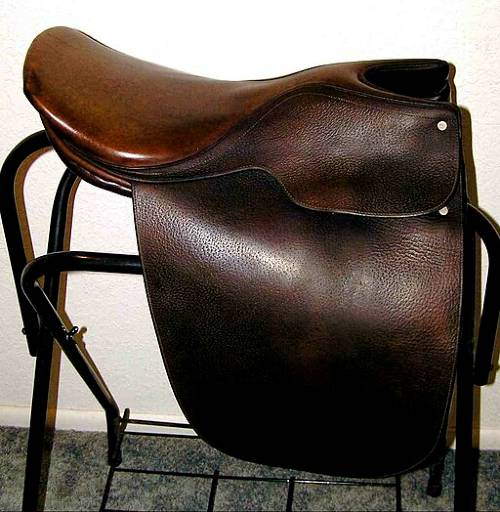
BLW, CC BY-SA 3.0, via Wikimedia Commons
You can use any style of bit on your gaited horse. Make sure that the bit you choose fits correctly, and that your horse is happy to be ridden in it. You don’t need a curb or shank bit for your gaited horse unless they are very strong.
If you plan on showing your horse, you may need to invest in specialty tack. Each breed will have guidelines on what tack and equipment are appropriate for the show ring. They may have rules on what color tack you can use, or certain items that you must or mustn’t use.
Gaited vs Non-Gaited Horses: Which One is Easier to Ride?
Generally speaking, one type of horse is not any easier or harder to ride than the other. Gaited breeds can be much easier to sit on, as their gaits are smoother. However, gaited horses are often trained in a slightly different way than non-gaited horses.
This is because they will be trained to respond to a certain cue to move into their gaits. This cue, or sequence of cues, varies on the breed and the trainer. If you are unfamiliar with gaited horses, it can be difficult to learn these cues.
Non-gaited horses tend to have a standard set of cues. This can mean that they are easier to ride as you switch from one horse to another. There is less likelihood that the training and cues will differ from horse to horse.
There are no other major factors that make one type of horse easier to ride than the other. Other factors, like temperament and education level, have a greater impact on how easy a horse is to ride. A poorly trained non-gaited horse will be harder to ride than a well-trained gaited horse; and vice versa.
Final Thoughts
The difference between gaited and non-gaited horses lies in their gaits, conformation, and specific advantages. Gaited horses are a great choice for trail and pleasure riders, as they can give a very smooth ride over a long distance. However, non-gaited breeds are often a better choice for more versatility or performance when it comes to sporting pursuits. Researching the traits of gaited vs non-gaited horses will help you decide which type of horse is best for you.

